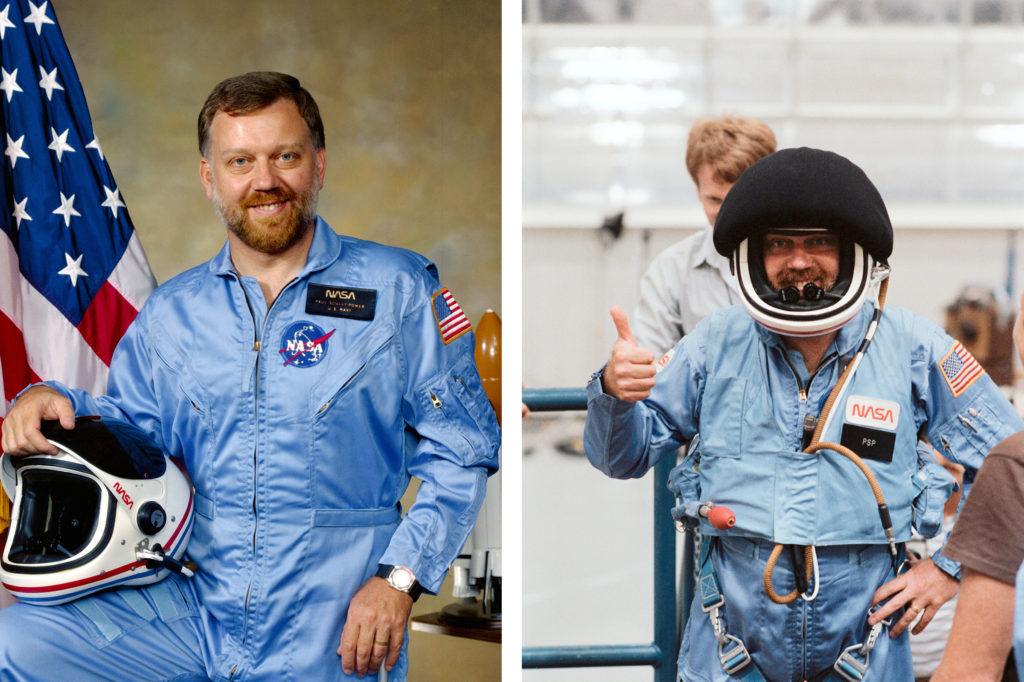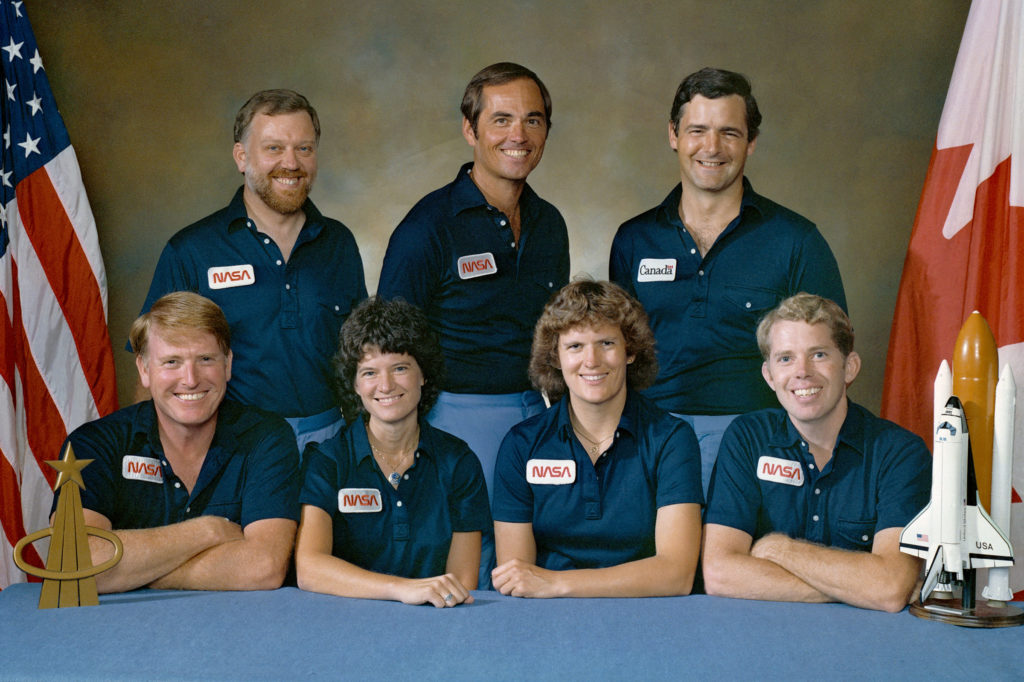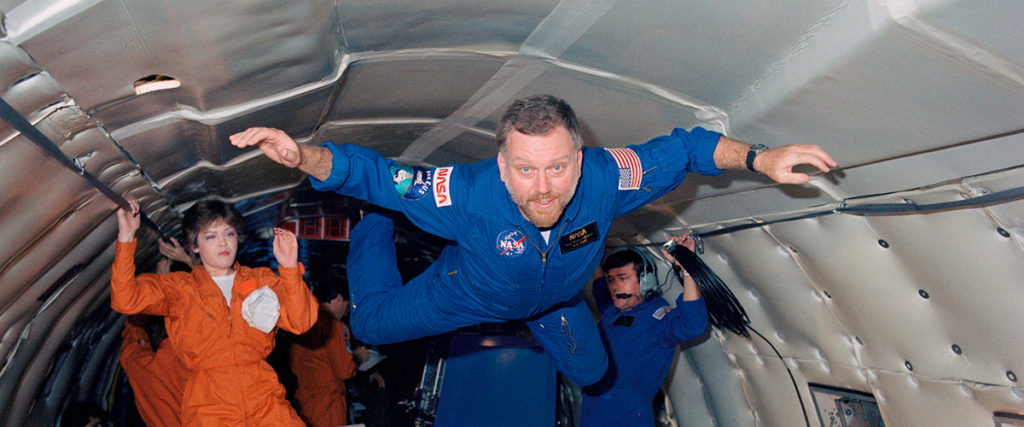Australia’s first astronaut Paul Scully-Power tells us all about his journey up in space – and how he’s continued to innovate in fields as diverse as AI drone technology, smart sensors, and FinTech.
On the 5th October 1984, as the shuttle orbiter Challenger stood on Launchpad 39A ready for NASA’s 13th flight into space, seven crew members carried out their final checks before liftoff. One of them was then 40-year-old Australian-born oceanographer Paul Scully-Power. It was a mission of firsts in many ways – the first space shuttle mission to carry a crew of seven, the first to have two women on board and NASA’s first Earth Scientist mission into space. Paul was also about to become the first Australian-born astronaut in space, the first man with a beard in space and the first oceanographer in space. Contrary to what you’d expect, however, his seat on the shuttle was not one sought thanks to a lifelong dream, but rather the culmination of a career that saw him move from oceans to space. “Going to space was just one of those things that happened,” he says. “I had to write a Mathematics thesis, and I loved surfing, so I figured I’d combine and I studied Oceanography,” he recalls. “Then, when I went over on exchange from the Australian Navy to the US Navy, they figured that, because astronauts spend their spare time looking out of the window, they had better understand what they’re looking at. So they hired me to brief them on oceanography and when the 13th flight of the shuttle came along and they asked me to be what in effect the chief scientist on board, I accepted!”

Photo Credit: Westpac Little Ripper
In spite of all his training, Paul says that the first moment you stare into the blackness of space is something you simply cannot prepare for. “As you go into orbit and look out of the window, what you’ve got to realise is, everything you see [on TV] is two-dimensional. What you see in space is three-dimensional. I remember looking down on the cities and I could actually make out the streets and cities with the unaided eye. It was pretty impressive to see.” By the time he’d finished his flight, he had completed 133 orbits of the earth and logged 8 days, 5 hours, 23 minutes and 38 seconds in space. “I had trained in ‘vomit comet’ [a zero-gravity plane] prior to this, so the feeling of zero gravity wasn’t new, but when there’s no gravity, you can look at the ceiling and say to yourself, ‘That’s my floor!’ and go walk on there. Your brain will rotate in a sense that you will know the ceiling is your floor. It’s amazing how fast you adapt!”
You might also like One NASA Astronaut’s Unlikely Journey

Photo Credit: NASA
As the first Earth Scientist flight to go into space, Paul’s mission on the Challenger flight STS-41-G was to conduct experiments and study Earth Sciences during his time up there. “Our biggest discovery was spiral eddies, which are currents in the ocean that go around in a spiral, looking like a spiral galaxy. They can be anything between 20 to 40 kilometres across in diameter and are fairly ubiquitous in the world’s oceans. No one ever realised that before,” explains Paul. “We also used a satellite that measures the amount of heat and sunlight that comes into and leaves the earth. And if you do that for a long enough time and build up all that data, you can work out the heat budget of the earth. What people don’t realise is that two-thirds of the earth’s surface is water, so if we’re ever going to be able to do climate predictions, we need to better understand the ocean, and if nobody’s putting spiral eddies into the computer models, we can’t make accurate predictions. Interestingly enough, we probably started the whole business of climate change!”

Photo Credit: NASA
As casual as he may seem about his journey to becoming an astronaut, Paul is clear on the dangers involved in a mission like his. “If you choose to go to space, you take a risk. Luckily, nothing went seriously wrong for us. We lost a few tiles during our ascent that got our attention, but luckily they weren’t critical,” he remembers. “If we had lost critical tiles and approached Earth at 25,000 kilometres an hour hitting the air, we would have burned up before we hit the ground, and that sort of spoils the rest of your day,” he says, half-jokingly. “Going into space and breaking the bonds of gravity takes a lot of energy, and if you put that energy in a small volume, I’ve just described a bomb. We know from history, they are somewhat unreliable, as we saw when the Challenger blew up.”
35 years on, Paul is now 75 and has continued to push the boundaries in many fields since that mission to space. He has co-founded the Ripper Group, establishing himself and his company as leaders in AI drone technology and applications; he is Space Ambassador to the Premier of NSW and a member of the Defence Review Board. And, perhaps most excitingly, he is helping to formulate the ‘Space City’ of the 21st Century that will be part of the new Aerotropolis at Western Sydney Airport. It all speaks to a life and career lived to the max – so much so that he can’t pick one defining moment. “Read my bio – they are all defining moments for me,” he laughs. “I have no idea what I want to be remembered for yet. I might do something tomorrow that I want to be remembered for. I’ll retire the day after I die.”
For more information about The Ripper Group, please check out their Facebook and Instagram
Banner Credit: Westpac Little Ripper
Related Articles
Photographer Philip Volkers Documents A Decade at Burning Man
British Adventurer Rob Lilwall Opens Up About Embracing Challenges & Overcoming Obstacles
Explorer Bruce Parry Returns To Premier Philosophical Exploration Documentary from Amazon to Ganges





